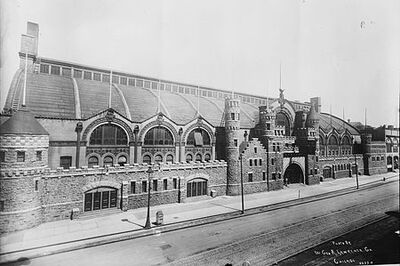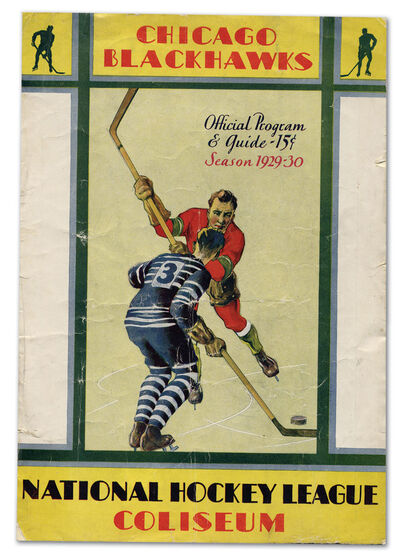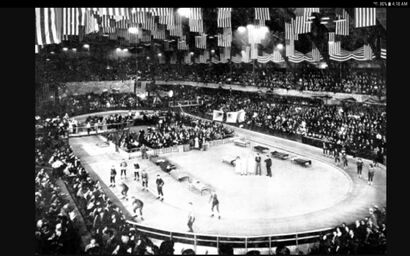
Exterior view of third Chicago Coliseum
The Chicago Coliseum were a series of large buildings in Chicago, Illinois from the 1890s to 1982 that served as a sports arena, convention center, and exhibition hall over the course of its history.
History[]
The first Coliseum was built on a 14 acre site at 63rd Street and Stony Island Avenue in the Woodlawn neighborhood, across from the main entrance of the World's Columbian Exposition, opening on 4 April 1893 to host Buffalo Bill's "Wild West" show. After the Fair, it was opened for general exhibitions such as the 1896 Democratic convention. It was later replaced with the Tower, a large cinema, and is now the site of a YMCA.
The second Coliseum was built on Wabash Avenue, between 14th and 16th Streets, by candy manufacturer Charles F. Gunther, in 1899. It took the place of the transplanted Libby Prison, a warehouse turned American Civil War prison that Gunter had shipped, brick by brick, from its original site in Richmond, Virginia, in 1889, and operated as a Civil War museum.
Gunter preserved part of Libby's facade, leading to the misconception that the Coliseum itself had once housed Union prisoners of war. In fact, the only penitents to "serve time" within the Coliseum's walls were hockey players sentenced to the penalty box.

Game program from the last NHL game at the Coliseum, Dec. 12, 1929

Usage by the Blackhawks[]
The Coliseum hosted the Chicago Blackhawks of the NHL from 1926–1929 with a seating capacity of 6,000. It was also the home of the Chicago Cardinals (later renamed Chicago Americans) of the American Hockey Association in 1926–27 and the Chicago Shamrocks of the American Hockey Association in 1931–32. In June 1928, fight promoter Paddy Harmon announced plans to construct Chicago Stadium, with the Black Hawks as the marquee tenants.
As the 1928–29 NHL season approached, the Stadium was not yet ready, and Blackhawks owner Major Frederic McLaughlin had had a falling out with Harmon. Consequently, the Blackhawks arranged to continue playing at the Coliseum. However, they could only get ice time through January 1929; they played the remainder of their "home" games in Detroit and in Fort Erie, Ontario, across the Niagara River from Buffalo, New York.
The Hawks were back at the Coliseum as the 1929–30 season opened, but negotiations with the Stadium resumed in the fall of 1929 after Harmon was deposed as head of the Chicago Stadium Corporation. In December 1929, they began play at the Stadium.
In 1932, another dispute led the Hawks to return temporarily to the Coliseum, for their first three home games of the 1932–33 campaign. On November 21, the Black Hawks defeated the Montreal Canadiens, 2–1, in their final game on Coliseum ice. Canadiens superstar Howie Morenz was the last player to score an NHL goal at the Coliseum, assisted by Aurel Joliat and Johnny Gagnon, at 7:06 of the second period.
With the Black Hawks gone, and the Great Depression on, use of the arena was limited.
In the middle '70s the building fell into disuse and it was demolished in 1982.
External links[]
- CinemaTreasures.org description of Tower Theatre
- Chicago Coliseum on ballparks.com
- Encyclopedia of Chicago entry on political conventions
| Preceded by first arena |
Home of the Chicago Black Hawks 1926–1929 |
Succeeded by Chicago Stadium |
